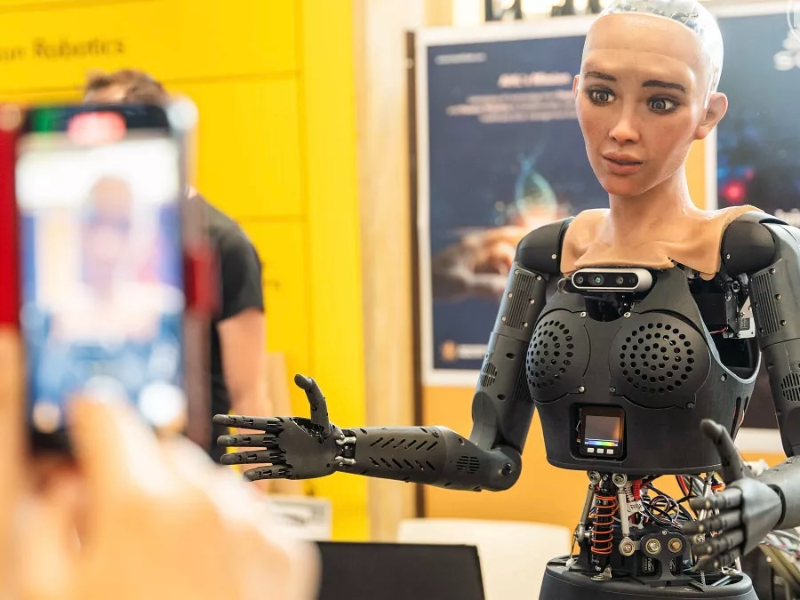- Shakey, developed by SRI International between 1966 and 1972, was the world’s first AI-based autonomous robot, pioneering advancements in robotics and AI technologies.
- Until the 1960s, robots were largely fictional until Charles Rosen and his team at SRI International began pioneering real advancements in AI and robotics, leading to the creation of Shakey.
- Shakey’s TV camera, radio antenna, detectors, and bumpers enabled it to interpret its environment and navigate obstacles, demonstrating early advancements in AI, programming, computer vision, and natural language processing.
Shakey, created by Charles Rosen and his team at SRI International from 1966 to 1972, was the first autonomous robot capable of making human-like decisions and performing tasks without step-by-step instructions. This groundbreaking robot integrated AI with robotics, `featuring a TV camera, radio antenna, detectors, and bumpers to navigate and interact with its environment. Shakey’s development marked a significant milestone in AI techniques, programming, computer vision, and natural language processing, inspiring modern technologies like cell phones, GPS, and self-driving vehicles.
Introduction
Shakey, created by SRI researchers, was the first autonomous robot capable of human-like decision-making and independent movement. Developed between 1966 and 1972, Shakey combined AI with robotics, inspiring future technologies such as cell phones, GPS, and self-driving cars. Its trembly movements earned it the name “Shakey,” and it demonstrated the powerful potential of integrated AI systems.
Also read: AI lies: Should we worry about deceptive AI models?
Also read: The many ways AI impacts your morning coffee
The challenge of early robotics
Until the 1960s, robots were mostly a product of Hollywood’s imagination, like Astro Boy, until Charles Rosen and his team at SRI International aimed to push the boundaries of what robots could achieve with advancements in AI and technology. This marked the beginning of serious research and development in the field of autonomous robots, setting the stage for Shakey’s creation.
Technical innovations and capabilities
Shakey was equipped with a TV camera, radio antenna, detectors, and bumpers, allowing it to interpret its environment, locate items, and navigate obstacles to complete user-given tasks. These capabilities showcased early advancements in AI techniques, programming, computer vision, and natural language interactions, which laid the groundwork for modern technological algorithms.
Impact on modern technology
The groundbreaking work done by Rosen and his team on Shakey influenced many areas of technology we see today. From AI programming to the development of computer vision and natural language processing, Shakey’s layered architecture approach has been foundational in advancing the capabilities of modern robotics and AI systems, highlighting the enduring legacy of this pioneering project.
Legacy and recognition
After revolutionizing AI and robotics, Shakey was retired and now resides in the Computer History Museum in Mountain View, California. Honored with an IEEE Milestone and induction into Carnegie Mellon University’s Robot Hall of Fame in 2004, Shakey’s contributions to technology continue to be celebrated, marking its place in history as a monumental achievement in robotics. Additionally, maintaining the health and functionality of multiple satellites in orbit requires ongoing monitoring and potential corrective actions.

